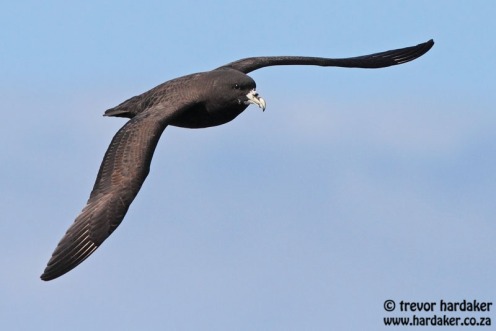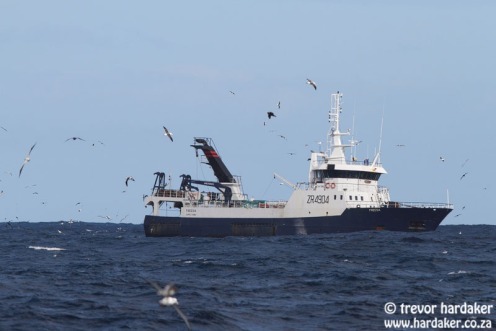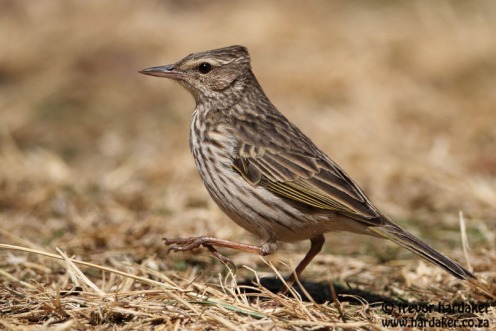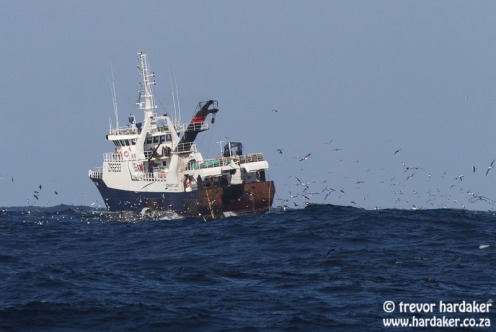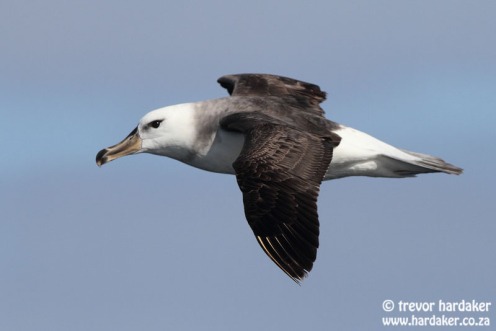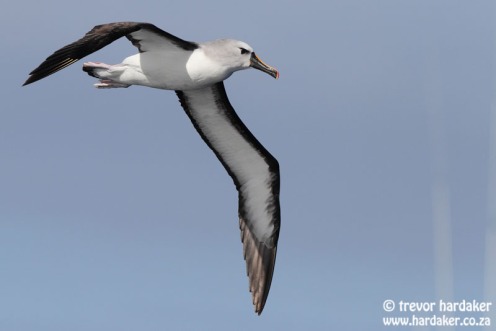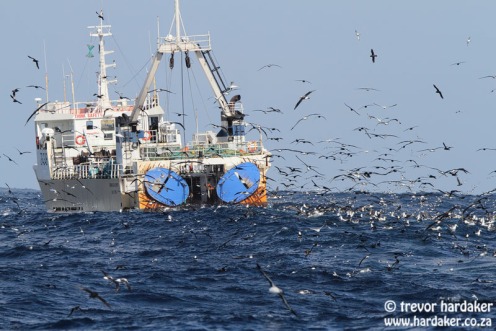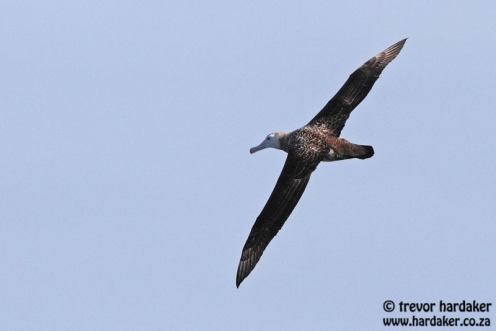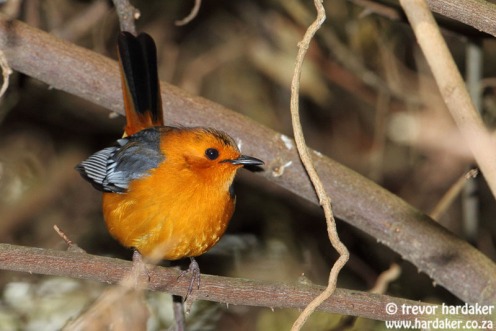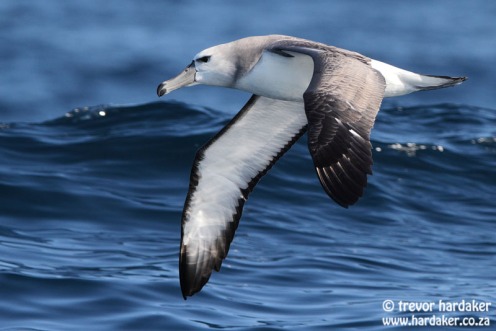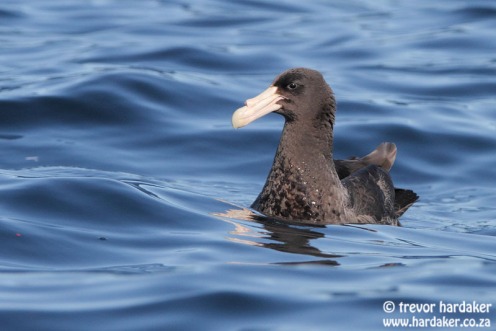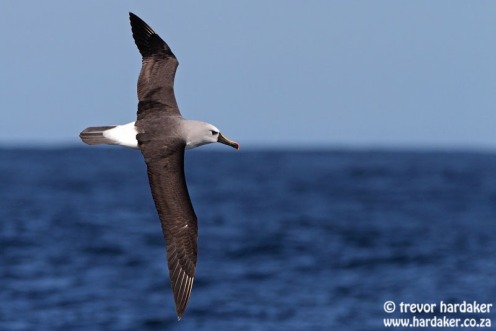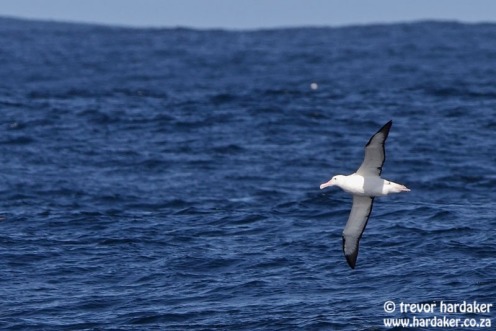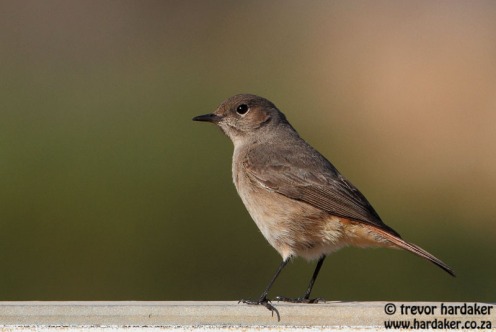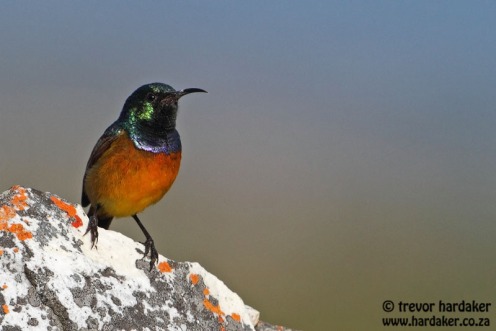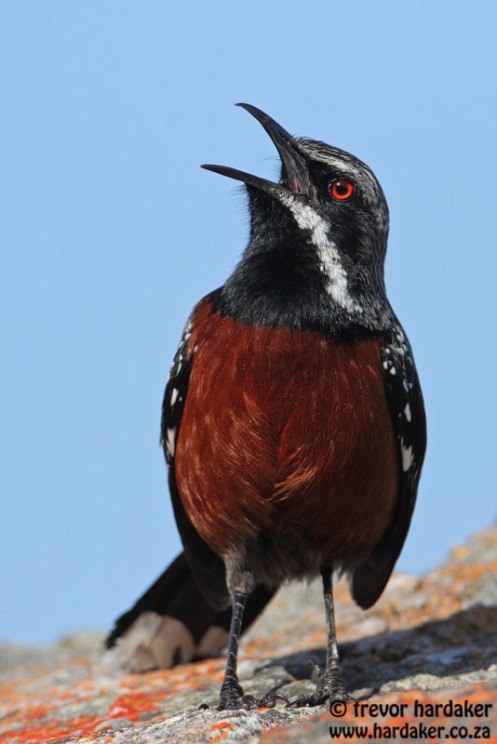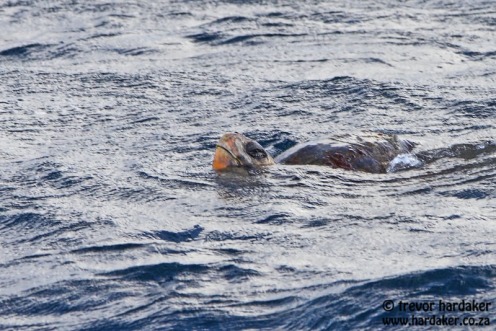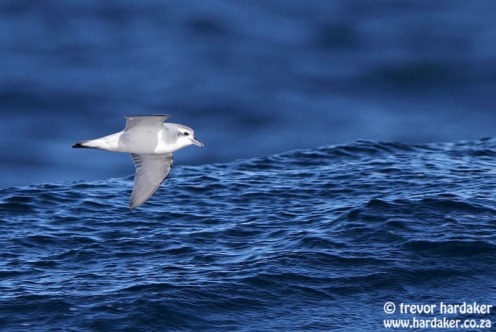After a long break, we eventually managed to get out to sea again today on another Zest for Birds pelagic trip (Trevor co-guiding with Cliff Dorse and John Graham). The weather was a bit miserable, with a 15 – 20 knot north-westerly wind and a bit of rain around, but predictions were that the wind would go into the south-west at midday and the swell was a choppy but still relatively easy 2,5m south-westerly swell, ensuring an easy ride home.
Our trip outwards was relatively uneventful, bar a steady accumulation of the regular pelagic species and a heavy downpour for 10 minutes or so. An unseasonal Manx Shearwater was a surprise, as were a sprinkling of overwintering Arctic Terns. By the time we were in the trawling waters, the skies had cleared somewhat but our spirits dampened again when we realised that there wasn’t a trawler or fishing boat within radar range.
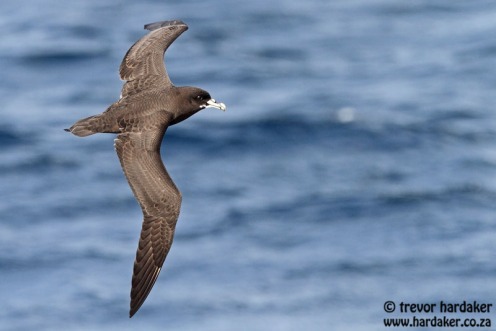
White-chinned Petrel
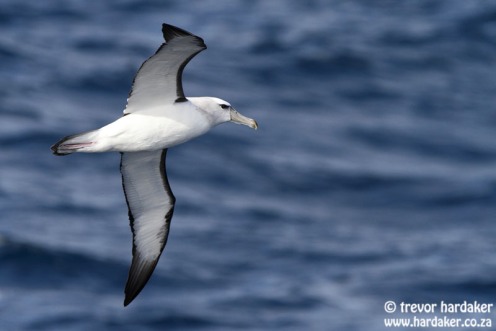
Shy Albatross

Black-browed Albatross
We birded on and accumulated a good list of species before turning back for home. Highlights were some excellent views of Soft-plumaged Petrels and Great-winged Petrels revelling in the windy conditions and showcasing their spectacular powers of flight, and a magnificent young immature Southern Royal Albatross that flew the length of the boat before disappearing down the wake. Pintado Petrels were their normal endearingly friendly selves and the prions showed very well, but all appeared to be the regular Antarctic Prions.

Pintado Petrel

Antarctic Prion

Soft-plumaged Petrel
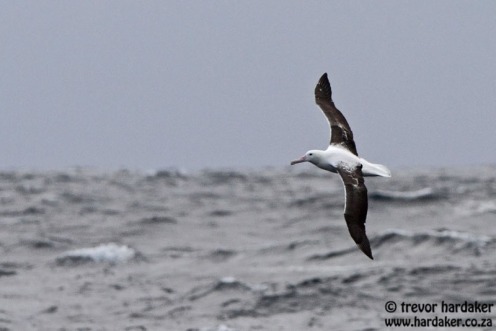
Southern Royal Albatross
Our voyage homewards was back into overcast conditions, but was entertainingly punctuated by regular visits from Soft-plumaged Petrels, and it was when watching one of these at only 6 nautical miles from Cape Point that a huge dark brown bird got up off the water some 150m or so off the starboard bow. Calls of “juv Wanderer” immediately went up from the guides and cameras were lifted and snapping away as this graceful giant flew level for a short while before heading off to the south-east. Immediately, something did not feel “right” about this bird and we carried out the mandatory review of pictures immediately and realised that there was something seriously amiss with this bird. Despite its overall brown “monkey jacket” type plumage and white face, it showed a glaring broad white hind collar that contrasted with a dark brown cap and ear covert line, and a broad white belly. Closer examination appeared to reveal a dark cutting edge and dusky tip on the bill, near diagnostic features of the critically endangered Amsterdam Albatross. Subsequently, the photos were sent off to a number of experts across the globe and the following passage is a direct quote from the SA Rare Bird News Report a few days later:
“We have finally reached a point, after having done some very thorough research into the various possibilities and communicated with a number of people on the issue, to announce that we now believe that the bird we saw and photographed about 6 nautical miles south-west of Cape Point on Saturday, 13 July 2013 was, in fact, an AMSTERDAM ALBATROSS! We have not taken this decision lightly and have discussed the issue ad nauseum with a number of people. It seems wrong, when so many people have given detailed and valuable input on the bird, to single out just a few, but there are 3 people who certainly should be mentioned and who all add definite weight to the credibility of the record.
The first two are the world’s leading seabird identification authorities, Hadoram Shirahai and Peter Harrison, both of whom have confirmed that they are happy, based on the latest understandings of identification criteria (much of which is not even published in literature yet!), that all other possible candidates can be eliminated and the bird is definitely an Amsterdam Albatross. The third person that deserves a mention is Jean-Paul Roux, the person who wrote the paper originally describing Amsterdam Albatross to science, and he, too, has come back to confirm the identification as that species! We could not have asked for a better vote of support for this record than from these 3 gentlemen!
This is a hugely significant record of a species that is classed as “Critically Endangered” with current population estimates sitting at a maximum of 170 individuals left in the world! I still have to check this, but it may well be the rarest species (on a global scale) that has ever been recorded in Southern Africa. Although this species has been satellite tracked into our waters before, there has never been a sight record that has been confirmed up until now. We count ourselves as truly fortunate to have been on board when this really special bird came to visit the boat and are extremely thankful that we managed to get photographs of it which were able to confirm the identification. Big smiles all round…:)”

Amsterdam Albatross
We continued on home, adding Humpback Whale and a playful pod of Long-beaked Common Dolphins to the trip list to bring to an end surely our most memorable pelagic trip of 2013 so far!

Long-beaked Common Dolphin
Posted in Uncategorized

